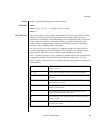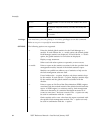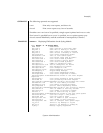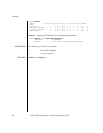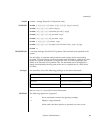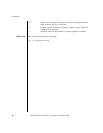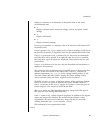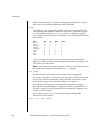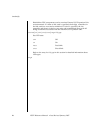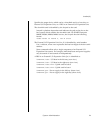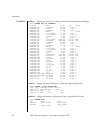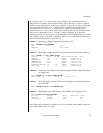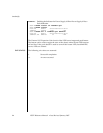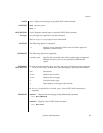
ioxadm(8)
68 XSCF Reference Manual • Last Revised January 2007
Fields containing a dash (–) indicate an unsupported setting. For example,
there may be no minimum temperature alarm threshold.
led_type
Used with the setled operand, specifies a software-controlled FRU LED.
The following table indicates which LED states can be controlled using the
setled operand with the off, on, fast, and slow LED state settings. Y
(yes) indicates that the LED can be controlled, N (no) indicates that it cannot
be controlled.
LED off on fast slow
ACTIVE Y Y Y Y
LOCATE Y N Y N
SERVICE Y Y Y Y
RDY2RM Y Y Y Y
OVERTEMP * * * *
DCOK N N N N
POWER N N N N
DATA N N N N
MGMT N N N N
* The OVERTEMP LED may be set to each state. However, the hardware
updates the LED state based on the sampled temperatures, so changes to the
LED state may not be visible.
Note – Other LEDs are not under software control. A list of LEDs present in
the system can be displayed by using the env -l operand.
list [target]
Lists the External I/O Expansion Units under system management.
If no target is specified, list displays a list of External I/O Expansion Units,
one per line. Each line contains the unique identifier for that box and the
host-specific name(s) for its downlink card(s). See
EXAMPLE 3.
If an External I/O Expansion Unit argument or downlink card path is
specified, the command displays a single line with the indicated FRU. If a
host path is specified, only the downlink card information is displayed. See
EXAMPLE 4 and EXAMPLE 6.
If the verbose option is set [-v], the output includes detailed FRU
information. See
EXAMPLE 5.
locator [on |off] [target]




